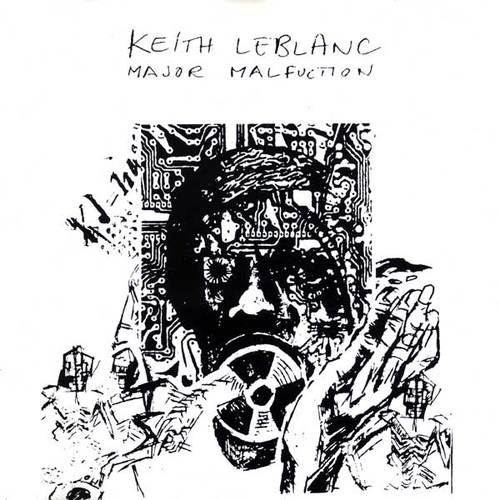2. Keith LeBlancMajor Malfunction

Although closely associated with Adrian Sherwood and the On-U Sound record label, this album – probably my favourite of that community – was not actually on On-U sound. I think in the order of how I encountered them, I probably came across the first two Tackhead singles, following Mark Stewart’s Learning To Cope With Cowardice, and for me it was a bit of a pivotal moment, marking a shift from a primary interest in things like Coil and Current 93 to something more overtly club-based. I think for example that, although Coil’s output between How To Destroy Angels and Horse Rotorvator (i.e. ‘Scatology’, ‘The Anal Staircase’ and ‘Tainted Love’) clearly referenced electro, it felt like a kind of repurposing of those styles – a kind of outsider as opposed to inside view. Or at least that is how it appeared to me all those years ago. I would probably reject that distinction now.
Nonetheless, the production style was clearly coming from a different place – not the slick, polished sheen of Stella or the analogue synthesis I would identify with Radcliffe’s production. Major Malfunction, produced by Sherwood, was alive with delay, reverberation, dynamic equalisation and so on, derived from the vocabulary of dub sound systems. But the striking thing about this album, and this is kind of my point number three, is its form. I think that LeBlanc’s Major Malfunction is a kind of reworking of Herbie Hancock’s Future Shock. I don’t have either of the records in front of me right now so I can’t do an A/B comparison, but if you listen to each back to back you will agree with me, I think, that there are some startling similarities: the melodic interludes, the rhythmic structure of some tracks and so on. I’m not accusing LeBlanc of copying Future Shock. Rather, I think its influence is clearly present in how LeBlanc has gone about the construction of his later work.


